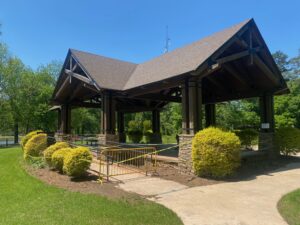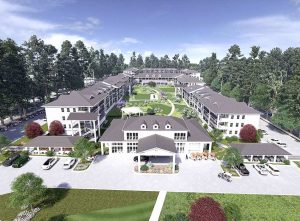Peachtree City staff is putting the finishing touches on a list of improvements to be funded with the remaining revenues from a $3 million facilities improvement bond issued several months ago.
At Thursday’s city council meeting, a proposal to repair the roof over the covered courts at the tennis center and also fix the facility’s HVAC problems was approved at a cost of $203,000.
The cost represented a $32,000 savings from the original staff proposal because of trims recommended by work from City Engineer David Borkowski, said Community Services Director Jon Rorie.
The city is also saving money by postponing a project to replace the Battery Way boat dock, originally estimated at $150,000, because the dock is in good structural condition, Rorie noted. Some $50,000 from that savings was steered towards the tennis center repair project, and the remainder will be used on other facility improvement projects.
The tennis center repairs will replace several broken HVAC units and also put a urethane covering on the roof to match the current red roof color. The covering comes with a 10-year warranty and will cost $169,000 compared to a price of $417,000 for a new roof with the same length of warranty.
The roof has leaked for some time and needs to be repaired, just as the HVAC system needs the work, Rorie said, noting that the temperature in the tennis center kitchen reached 95 degrees the other day.
It was noted that the city has been criticized for moving too slow on repairing various tennis courts in the city, some of which have been temporarily closed for safety reasons. Rorie said the repairs will cost $260,000 for all of the courts including the Braelinn, Bluesmoke, Smokerise and Glenloch facilities.
The catch is making the value decisions to possibly pare down the cost, such as whether the four Glenloch courts can be resurfaced instead of fully replaced, which could save money in the short term but cost more in the long term if the repairs don’t last, Rorie said.
The Smokerise courts have such a structural issue that a vendor wouldn’t submit a bid for the resurfacing, Rorie noted.
Other potential options include a complete asphalt rebuild for the courts or the use of a surface called permacourt that comes with a 25-year warranty but would have to be repainted every five or six years, he added.
The $260,000 figure is the highest possible amount to rebuild all the tennis courts, but the goal is to try and reduce the cost if possible using value judgments, Rorie said.
There are other questions to answer, such as how much the Smokerise court is used, since some residents think that court is actually a private one owned by the subdivision. It is clear that the Braelinn courts need to be tackled first so they can be reopened, followed by Glenloch next with the Bluesmoke and Smokerise courts lowest on the priority list, Rorie added.
Councilman Eric Imker said he was ready to vote on the repairs for the tennis courts, and Councilwoman Vanessa Fleisch said several of the courts were padlocked, and if council moved quickly on the improvements, it would address several areas of the city.
“I know we have a lot of citizens waiting for that to happen as well,” Imker said, adding that he felt the funding for the project “was doable” and he wanted the city “to move on it.”
The tennis courts are just a piece of the puzzle when it comes to the projects that need to be tacked around the city. Rorie noted that the city will need to spend $210,000 to repair a sewer pipe to the city amphitheater, but as important as that project is, it needs to be delayed until after the annual summer concert series.
City officials have been able to achieve some cost savings on the proposed $500,000 parking lot addition for the city’s Baseball and Soccer Complex, Rorie noted.
Several areas have been identified that can be paved, and other spots have ben identified where parking can be added without a huge cost, he noted.
The city is also looking at a option to add “grass paved” parking with about 100 spaces for about $250,000, Rorie said.
City staff is also evaluating the possibility of saving funds by closing one of its three pools, Rorie noted.
Imker added that a subsequent facilities bond to be issued in the next 10 years, which could be accelerated, to pay for projects that aren’t covered by the initial $3 million bond. A second $3 million bond has been put in the city’s long range 10-year budget plan, he added.
Imker suggested that city staff use a best guess estimate for the projects on the list that have no estimate yet, so as to give the city council a number to work with so it can prioritize the next $1.5 million in bond spending priorities.










Leave a Comment
You must be logged in to post a comment.